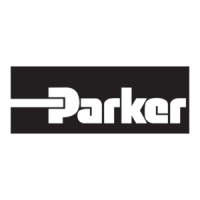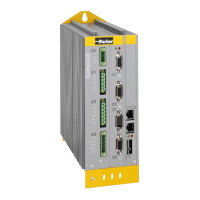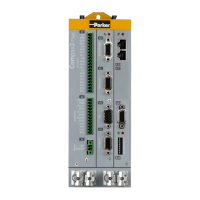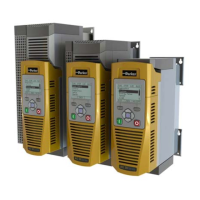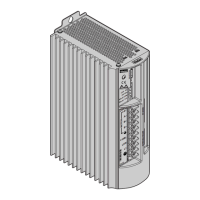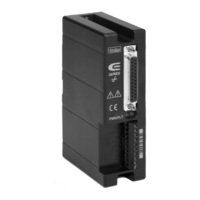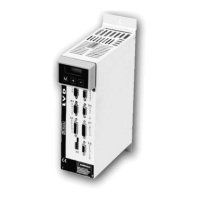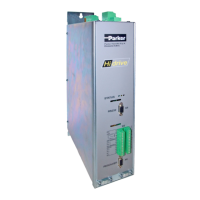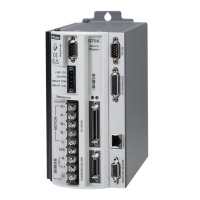Parker EME
Setting up Compax3
192-120114 N5 C3I22T11 June 2008 259
In general, the analysis of the dynamic behavior of a system is made by analyzing
the input and output signals.
If you transform the input signal as well as the output singal of a system into the
range (Fourier transformation) and then divide the output singnal by the input si-
gnal, you get the complex frequency response of the system.
()
()
()
sU
sY
sG
=
with
)
)
() ()
sUtu
sYty
F
F
⎯→⎯
⎯→⎯
A problem are, however, superimposed systems (the control)
Course of the measurement
superimposed controls are switched of (open Loop) or attenuated
The excitation signal is injected in front of the system to be measured with the aid
of the signal generator. Wait, until the system settled.
Execution of the measurement: Registration of input and output signal with the
aid of the oscilloscope.
Upload of the measurement values from the controller into the PC.
Processing of the measurement values into a frequency response
If a cumulated measurement is configured: Averaging over several frequency
responses.
During cumulated measurement, an average is taken over all measurements in the
result memory and the result is then put out.
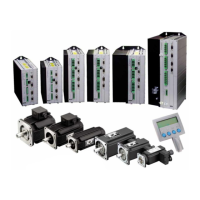
